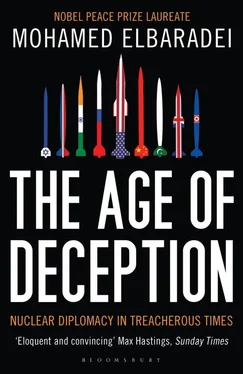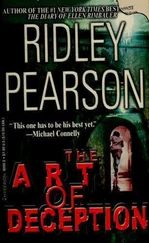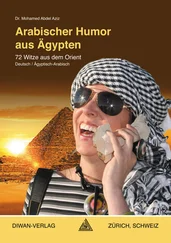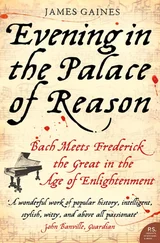The article got lots of attention, and the idea took on a life of its own. The United States and its allies began to push for a “Global Nuclear Energy Partnership.” Russian president Vladimir Putin suggested creating a web of international fuel cycle centers. Germany proposed establishing a site where the IAEA would operate an international uranium enrichment facility.
A creative approach was taken by Ted Turner and Sam Nunn, [9] Former head of the U.S. Senate Armed Services Committee and one of the foremost American experts on defense policy, as well as a staunch supporter of the IAEA.
head of the Nuclear Threat Initiative, [10] NTI is a nonprofit organization that funds selected projects to reduce the threat of nuclear weapons proliferation.
who convinced American investor and philanthropist Warren Buffett to contribute $50 million to finance a fuel reserve under IAEA custody. Buffett’s seed fund required governments to match it with $100 million as a symbolic first step on the road to multinationalization of the fuel cycle.
But distrust quickly followed. The United States, Russia, France, Germany, Holland, and the United Kingdom brought a proposal to the IAEA Board that began with largesse—an offer to ensure the supply of reactor fuel—but only if recipient countries gave up their rights as granted under the NPT to enrichment and reprocessing.
This pointed to a fundamental difference in approach. In my vision, the creation of multinational fuel cycle facilities was the first phase of a multiphase process that would reduce the divide between the nuclear haves and have-nots—curtailing proliferation and ultimately opening a path toward nuclear disarmament. The six-country proposal addressed only the most immediate objective—preventing “additional” proliferation—and did so in a way that only exacerbated the nuclear divide: essentially, we keep the technology, and no one else gets it. It was an in-your-face mandate, a blunt demand for participating countries to give up a cherished right.
I could see the train wreck coming: I implored the proposal’s sponsors not to make the plan conditional on any country giving up its rights. But the United States insisted: the condition would remain. The proposal was circulated to all Board members.
The result, as I had anticipated, was deep misgivings, not only among developing countries but also from Canada, Italy, and Australia, for example, countries that did not have a full fuel cycle but that wanted to keep their options open for the future. A few additional countries, such as Japan, Germany, the Netherlands, Brazil, and Argentina, straddled the fence: they did not possess nuclear weapons, but they had the know-how to produce nuclear material, which elevated their status. None of the countries with such an advantage was willing to give it up in order to advance a multinational program that would reduce proliferation risk.
This early proposal poisoned the well. The countries without advanced nuclear technology came to view each subsequent proposal with suspicion—as a series of ruses designed to rob them of their rights. The distrust between the nuclear haves and have-nots, already palpable, was exacerbated and continued to dominate the back corridors of international nuclear diplomacy.
From the time that the first A-bomb had fallen on Hiroshima, the possession of nuclear weapons by a limited few had served as an irritant and an incentive for competition to those who had none. The refusal of most of the nuclear weapon possessor states to acknowledge this cause and effect made it no less true. Although the NPT made it clear that the possession of nuclear weapons by five countries was intended as a transitional phase en route to nuclear disarmament, thirty-three years later disarmament was at a virtual standstill. Every statement by one of the nuclear weapon possessor states to “reaffirm” the deterrent value of nuclear weapons, every action to refurbish or modernize a nuclear arsenal, was another signal of a lack of good faith to the nuclear have-nots.
Increasingly, this context shaped the debate among members of the IAEA Board over Iran’s past and current nuclear activities. Few if any of them condoned Iran’s secret pursuit of a nuclear program, although they understood the reasons for it. Everyone had urged them to come clean. But at the same time, many countries resented the nuclear club’s exclusivity and could understand Iran’s desire to acquire fuel cycle technology. In the absence of proof that Iran was actually seeking nuclear weapons, these countries were unwilling to condemn Tehran’s actions outright. Pressure from Western governments only served to deepen this divide.
The period from late 2003 until the fall of 2005 marked a discrete phase in the face-off between Iran and the international community over Iran’s nuclear program. Bracketed by the optimism of the Tehran Declaration and Iran’s stated commitment to transparency at one end and at the other, severe international disagreements on how to handle the Iran file, this period was marked by every feature that would come to characterize the extraordinarily complex struggle over Iran’s nuclear development: the sacrifice of pragmatism to the vaguest of “principles”; the counterproductive outcome of hard-line tactics; and the constant ratcheting up of stakes that accompanied each new stance of opposition.
From the Agency’s perspective, during these years the IAEA—or, more specifically, our Board meetings—became a battleground where clashing positions on Iran were fought out. An early example occurred prior to the Board’s March 2004 meeting, which we went into with some concerns about responses we had received from Iran. One issue involved Iran’s centrifuge technology. The centrifuges successfully procured by Iran conformed to one design, supplied by Pakistan, designated P-1. However, through inspections and inquiries outside Iran, the IAEA now found reason to suspect that Iran might also have pursued a more advanced P-2 model. Both designs, it appeared, were styled after earlier European models and had been copied by Pakistani nuclear scientist A. Q. Khan during his work at the URENCO, an enrichment facility in the Netherlands.
Up to this point, IAEA inspectors had been given no indication of work on P-2 machines. But we knew that the Iranians had attempted to conduct R&D on as many aspects of the nuclear fuel cycle as possible. The P-2 model was more advanced than the P-1, with higher enrichment capacity. It seemed unlikely that the Iranians, if given the opportunity, would have declined to work on P-2 production.
Agency inspectors pressed the point. In January 2004, the Iranians acknowledged that back in 1994 they had indeed received drawings for the P-2 centrifuge model. Engineers at a private company in Tehran performed limited testing, under contract with the Atomic Energy Organization of Iran, on a modified P-2 design. Iran neglected to include a mention of this in their October 2003 declaration to the Agency.
Another issue involved the Lavizan-Shian Technical Research Center, located in a suburb of Tehran. This center had been cited as a possible WMD research facility. The Agency received information that radiation detectors had been procured for use at this location. Satellite photos showed that at some point after August 2003, the site had been razed, its buildings torn down, and the grounds cleared, suggesting an effort at concealment.
The Iranians declared that Lavizan-Shian had been a Ministry of Defense facility, conducting research on responding to nuclear attacks and accidents. The site had been razed after the ministry had been instructed to return the land to the municipality of Tehran, following a dispute between the two government organizations.
Читать дальше












